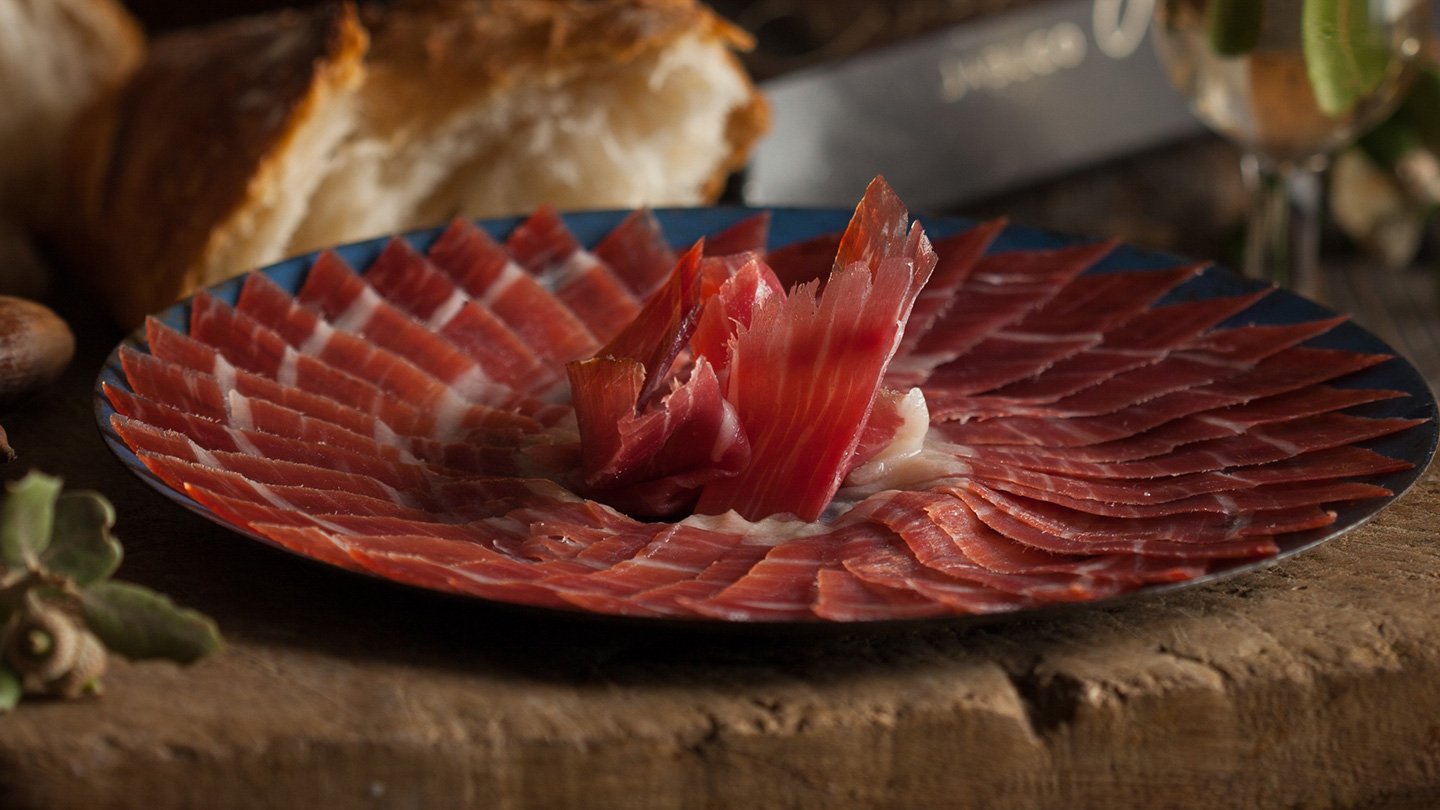In Spain we adore jamón, a cured ham that is a staple of any tapas menu. Step into any bar and chances are there will be a ham leg sitting there so waiters can slice off thin strips, or several ham legs hanging from the ceiling. Jamón Ibérico is Spain’s highest quality ham, made from black Iberian pigs that subsist mainly on a diet of acorns.
The black Iberian pig lives primarily in the south and southwest parts of Spain and there are four Designations of Origin: D.O. Guijuelo (Salamanca), D.O. Dehesa de Extremadura, Córdoba (Denomination of Origin Los Pedroches) and D.O. Huelva.
10 Best Spanish ham brands: Top of Spanish jamón
There are four grades of jamón ibérico, categorised primarily by the diet of the pigs. The curing process remains almost the same, but the length for which they are aged will differ with the lower grade hams receiving little more than a year of hanging and the very best up to four years.
- Jamón ibérico de bellota: From pure Iberico pigs fed on a diet of acorns. These hams are aged for at least three years before being released and often labelled ‘reserva’ and ‘gran reserva’ to denote their age and quality.
- Jamón ibérico de recebo: Fed on a diet of cereals and acorns and aged for at least three years.
- Jamón ibérico cebo de campo: Free range, but fed only on a diet of cereals.
- Jamón ibérico de cebo: Commercially reared pigs fed on a diet of cereals.
And it is also worth sampling these excellent Serrano hams with a different Spanish ham Designation of Origin seal:
- Jamón de Trévelez: Produced in Granada (South East) from white pigs which have been fed on commercial cereals, this is still a very fine ham, which fans say has a sweetness that comes from the climate in which the pigs are reared.
- Jamón de Teruel: Produced in Teruel province (Spain’s North East) this was the first jamon in Spain to receive DO status. These mountain hams must be aged for at least 12 months after curing before being sold.
Fresh hams are trimmed and cleaned, then stacked and covered with salt for about two weeks in order to draw off excess moisture and preserve the meat from spoiling. The salt is then washed off and the hams are hung to dry for about six months. Finally, the hams are hung in a cool, dry place for six to eighteen months, depending on the climate, as well as the size and type of ham being cured. The drying sheds (secaderos) are usually built at higher elevations, which is why the ham is called jamón serrano “mountain ham”.
Spain produces an astonishing quantity of 40M hams a year, including excellent varieties of the famous jamón serrano made from the dry-cured legs produced in regions such as Teruel and Trévelez. But, it is to the west you have to look for the finest jamón, to the vast tracts of land known as the Dehesa, an ecosystem of prairie-like grazing land dotted with encina trees, known as holm oak in English, which once covered almost 90% of the country but now only remains in the regions of Salamanca, Extremadura, Andalucia and across the border into Portugal.
